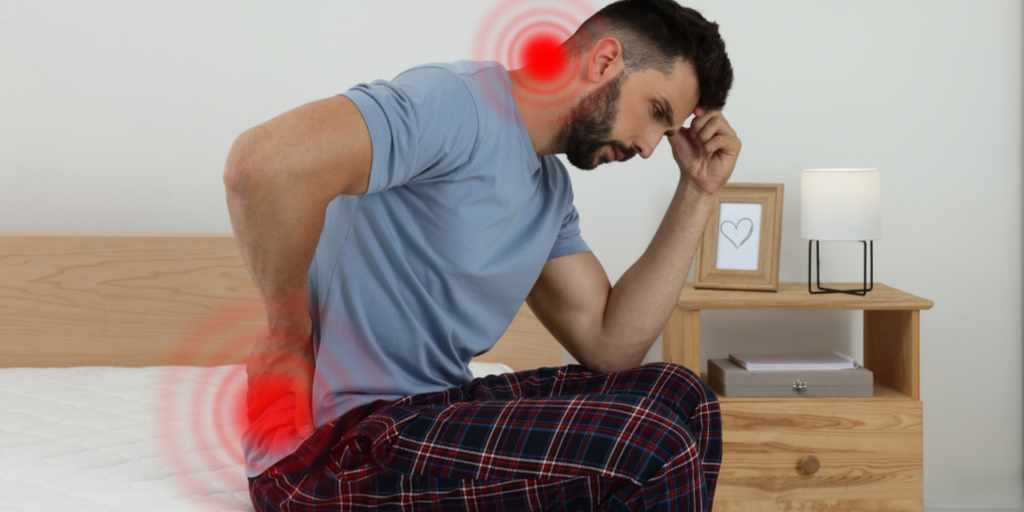Ergonomics in a bar focuses on designing bar spaces and selecting equipment that aligns with the physical needs of bartenders, aiming to reduce the strain and potential injuries associated with their role. Ensuring the bar is fitted with an ergonomic design can lead to a safer work environment and greater efficiency and staff satisfaction. By considering the bartender’s movement, reach, and frequency of certain tasks, owners can create a bar that promotes well-being and enhances performance.
Key Takeaways
- Efficient ergonomic design reduces bartender strain and injury risk.
- Optimal bar layout and equipment placement enhance workflow.
- Improving ergonomics can lead to better customer service.
Ergonomic Bar Design Principles
Ergonomic bar design is key in ensuring a space that maximizes staff efficiency and profitability. It requires specific attention to detail, from bar height to aisle width.
Importance of Ergonomic Efficient Bar Design
Ergonomic bar design is integral not only to the bartending staff’s well-being but also to a bar’s effectiveness and profitability. An ergonomic efficient bar design promotes faster service, minimizes staff fatigue, and reduces the risk of injury, translating to a smoother operation and potential for increased profits. Customizing the bar layout to fit the staff’s needs ensures that they can work swiftly and comfortably, leading to happier customers and better overall service.
A bar designed with ergonomics in mind has a well-thought-out layout that allows for fluid movement and easy access to tools and ingredients.
For example, the bar height should generally range from 42 to 45 inches, allowing bartenders to work without hunching over. In comparison, a bar top width of 30 inches to 36 inches gives enough space for preparing multiple drinks simultaneously.
Aisle width is also crucial, with a 31 to 37-inch recommendation to enable easy passing without bumping into coworkers or guests.
Understanding Bar Space Utilization
Utilizing bar space effectively is a core component of ergonomic bar design, as an optimized workspace can significantly improve workflow efficiency. The organization of the back bar area directly affects the ability to serve drinks quickly. Everything from the placement of glasses and liquor bottles to the positioning of sinks and ice bins must be considered.
Effective ergonomic design ensures that the most commonly used items are within the bartender’s easy reach. This speeds up service and reduces the amount of movement required to prepare a drink, which, over time, can lessen wear and tear on the bartender’s body.
According to some design standards, the highest reachable shelf should be between 69 and 72 inches, allowing bartenders to access bottles without overstretching or needing a step stool.
For maximum bar profitability, every component within the bar space should contribute to an efficient workflow. Attention to detail, such as placing a bartender’s workstation, is a substantial factor. For instance, a smartly designed station includes a bartender-facing refrigeration unit and appropriate troughs for ice and waste, making all the difference in maintaining a smooth operational flow.
Equipment and Bar Layout
This section discusses crucial elements of bar design that optimize bartender efficiency and patron comfort, focusing on the relationship between bar equipment and the layout.
Optimizing Bar Height and Bar Stools
Bar height is integral to an ergonomic design, typically between 42-45 inches (1067mm – 1143mm), allowing patrons to comfortably lean or perch on bar stools without straining. Seats should complement this height, facilitating ease of access and egress for guests while also considering an adequate aisle space to navigate.
Bar Equipment Positioning for Efficient Workflow
Placing bar equipment strategically is essential for maintaining an efficient workflow. The bar top should ideally measure 30-36 inches (762mm – 914mm) wide, and the inside edge should overhang the bar die by 11 inches (279mm), creating ample workspace. Speed rails, ice bins, and sinks should be within arm’s reach, allowing bartenders to move less and do more—”limiting movements to two steps or less” is optimal.
Strategic Placement of the Back Bar and Adjacent Walls
The back bar layout must facilitate easy access to the most commonly used bottles and tools; they should be placed no higher than the highest reachable shelf to prevent straining. It’s recommended that shelves have a dimension allowing visibility and reach, with more space allocated to the lower shelves. Walls adjacent to the bar should feature recessed areas or additional storage to expand the bartender’s workspace without compromising on the open area of the bar.
Maximizing Staff Productivity and Safety
Ensuring that bartenders work in an environment that maximizes their productivity and maintains their safety is critical. Proper ergonomic practices and efficient workstations can significantly enhance job performance and reduce the risk of injury.
Enhancing Overall Bartender Productivity
To heighten productivity behind the bar, it is essential to address the work environment. A bartender’s positioning relative to commonly used equipment and ingredients should minimize movement and allow for a smooth flow of activities. For instance:
- Point of Sale (POS) Systems: Position POS systems within arm’s reach to reduce unnecessary steps.
- Glassware and Ingredients: Strategically locate these items to prevent repetitive motion and twisting.
By structuring the bar space efficiently, bartenders can perform their jobs faster and more accurately, positively impacting overall productivity.
Implementing Ergonomic Practices to Reduce Injuries
Reflecting on human use, incorporating ergonomic practices is vital in preventing injuries and maintaining bartender welfare. Adjusting the physical setup to suit the individuals using the space can make a considerable difference. For example:
- Quality Footwear: Encourage bartenders to wear slip-resistant shoes that provide ample support to alleviate strain during long shifts.
- Equipment Design: Use tools designed to fit the hand properly, reducing grip strain and the likelihood of repetitive strain injuries.
A focus on ergonomics also means training bartenders in proper form while performing tasks such as lifting, keg changes, or restocking to avoid back and shoulder injuries.
By prioritizing the safety and comfort of bartenders through ergonomic practices and conducive work conditions, bars can foster a more productive atmosphere and happier, healthier staff.
Enhancing Customer Experience
In the realm of bartending, a customer’s contentment hinges significantly on the bar’s layout and design. A strategic design augments the space’s aesthetic and operational aspects and assures a more seamless guest experience.
Design for Seamless Guest Interaction
Bartenders know that a key component to guest satisfaction is the ease of interaction from the moment a patron enters the bar. An optimal bar design allows bartenders to greet guests promptly, take orders efficiently, and serve drinks and food without unnecessary delay.
Keeping essential items within arm’s reach and maintaining a clutter-free countertop are vital for these interactions. For example, categorically displaying a well-organized back bar with spirits and beverages reduces the time taken to locate and serve a requested drink, directly influencing customer satisfaction.
Creating an Aesthetically Pleasing and Functional Space
The aesthetic allure of a bar can be as important as the functionality for customers’ overall experience. Design elements like lighting, seating, and decor must create an inviting ambience that resonates with the brand’s identity. Furthermore, an ergonomic bar setup benefits the staff and enhances the experience for bar patrons.
Seats should provide comfort, and the table spacing ensures privacy while allowing for free movement. These design choices reflect attentiveness to customer needs, which inevitably heightens their experience.

Frequently Asked Questions
Proper bar design and training can significantly improve ergonomics, enhancing efficiency and reducing injury risk.
How can bar design influence ergonomics and efficiency?
A bar designed with ergonomics in mind typically ensures that bartenders have easy access to tools and ingredients. It also optimizes the work area to reduce unnecessary movement, enhancing efficiency and comfort.
What ergonomic training practices are recommended to prevent injuries for bartenders?
Training in proper lifting techniques and using assistive devices can help bartenders prevent injuries. Regular breaks and exercises focusing on strength and flexibility are also recommended.
What are common ergonomic hazards faced by bartenders in the workplace?
Bartenders often encounter ergonomic hazards such as repetitive motions, heavy lifting, prolonged standing, and awkward positions that can lead to musculoskeletal disorders.
How can bartenders reduce the risk of developing carpal tunnel syndrome?
To lower the risk of carpal tunnel syndrome, bartenders can use ergonomic tools, practice wrist-friendly pouring techniques, and ensure that their work area allows for neutral hand positions.
See this article for more tips to avoid wrist strain.
What strategies can be employed to alleviate hand pain caused by bartending?
Padded mats, adjustable height stations, and ergonomic bar equipment can help relieve hand pain. Additionally, stretching and strengthening exercises may be beneficial for maintaining hand health.
What are the most challenging physical aspects of being a bartender, and how can they be mitigated?
Lifting heavy kegs and standing for long periods are among the most physically demanding aspects of bartending. Bars can mitigate these challenges by providing support equipment like keg dollies and by designing workspaces that allow for sitting or leaning.




